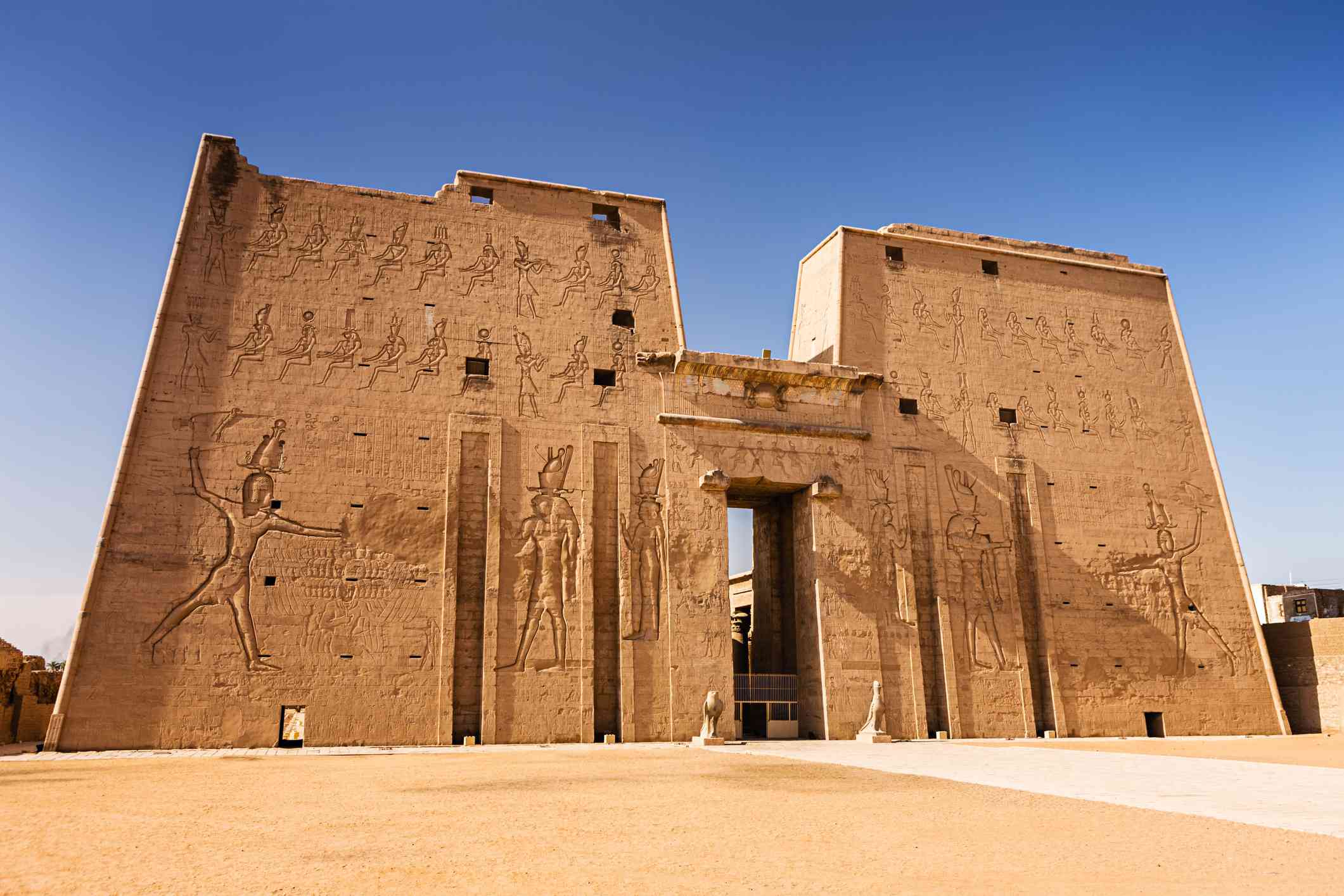Welcome to the mystical land of Egypt, where ancient wonders await those who seek to explore beyond the well-trodden paths. In this edition of “Historical Sites along the Nile,” we will embark on a journey to uncover the hidden treasures of two remarkable temples – Edfu and Kom Ombo. These off-the-beaten-path gems promise a unique glimpse into Egypt’s rich history and architectural marvels.
The Temple of Horus in Edfu:
Is one of the best-preserved ancient temples in Egypt, dating back to the Ptolemaic dynasty (305-30 BCE). The temple is dedicated to Horus, the falcon-headed god of the sky and protection, and took over 200 years to complete. The temple’s size and intricate carvings are a testament to the skill and dedication of the ancient Egyptians. One of the most impressive features of the temple is its roof, which is covered in colorful mosaics depicting scenes from Egyptian mythology.
The Colossal Courtyard: A Glimpse into Ancient Majesty
As you step through the towering entrance pylons of the Edfu Temple, the grandeur of ancient Egypt unfolds before your eyes. The colossal courtyard welcomes you with a sense of awe, surrounded by towering columns that seem to reach for the heavens. Each column tells a story, adorned with intricate carvings and hieroglyphics that depict the rituals and tales of a bygone era.
Wander through this open expanse, imagining the lively scenes that once unfolded here – priests in elaborate ceremonial attire, worshippers engaged in religious practices, and the ever-present sense of divine connection. The courtyard serves as a sacred stage, where the dramas of ancient Egyptian life played out against the backdrop of the Nile’s eternal flow.
The Hypostyle Hall: Where History Comes to Life
As you proceed deeper into the temple, the Hypostyle Hall unfolds, a majestic space filled with colossal statues and exquisitely preserved hieroglyphics. This sacred hall served as the heart of religious ceremonies, a place where the divine and mortal realms converged.
Stand amidst the towering columns, each intricately adorned with depictions of gods, pharaohs, and mythological creatures. The play of light and shadow accentuates the details, offering a captivating insight into the religious practices and beliefs of the ancient Egyptians. Take your time to decipher the stories etched in stone, unlocking the secrets of a civilization that revered the sacred bond between gods and humanity.
Ascending to the Rooftop: A Panoramic Perspective
For a truly breathtaking experience, make your way to the rooftop of Edfu Temple. As you ascend, the panorama of the surrounding landscape unfolds, revealing the timeless beauty of the Nile River and the enchanting Egyptian scenery.
From this vantage point, you gain a unique perspective on the temple’s architecture and layout, appreciating the meticulous planning that went into its construction. The tranquil flow of the Nile beneath, coupled with the distant sounds of nature, creates a serene ambiance. It’s a moment to pause, reflect, and immerse yourself in the sheer majesty of the ancient world.
The Temple of Sobek and Horus at Kom Ombo:
Is a unique dual temple dedicated to two gods: Sobek, the crocodile god, and Horus, the falcon-headed god The temple was built during the Ptolemaic dynasty but underwent significant renovations during Roman times. The temple’s location on a hill overlooking the Nile River makes it an especially picturesque site. One of the most fascinating aspects of the temple is its collection of crocodile mummies, as Sobek was often depicted as a crocodile in ancient Egyptian mythology. The temple also features an astronomical clock tower, added during Roman times, which includes a sundial and an astronomical calendar that allowed priests to accurately predict lunar eclipses and other celestial events.
Mirrored Halls: An Architectural Marvel:
What makes Kom Ombo truly distinctive is its architectural symmetry, a reflection of the balanced worship of Sobek and Horus. As you meander through the temple’s complex, you’ll encounter mirrored halls and sanctuaries, each dedicated to one of the divine counterparts. The meticulous design and layout of Kom Ombo Temple symbolize the harmonious coexistence of these two powerful deities in the ancient Egyptian pantheon.
Stories in Stone: Reliefs and Statues:
The walls of Kom Ombo Temple are adorned with detailed reliefs and statues that narrate stories of ancient battles, medical practices, and religious ceremonies. The intricate carvings depict the triumphs of pharaohs, the mysteries of healing rituals, and the solemnity of religious processions. Each step through the temple becomes a journey through time, unraveling the multifaceted tapestry of ancient Egyptian life.
The Crocodile Museum: Guardians of Ancient Reverence:
One of the most intriguing facets of Kom Ombo is its Crocodile Museum. Within its walls, mummified crocodiles, once revered as sacred animals, find their eternal resting place. This fascinating exhibit offers a unique perspective on the intricate relationship between ancient Egyptians and the creatures of the Nile. As you explore the museum, you’ll witness the veneration bestowed upon these reptilian deities and gain insight into the spiritual significance they held in the hearts of the ancient worshippers.
Unraveling the Complex Tapestry:
Kom Ombo Temple is not just a structure; it’s a living testament to the nuanced beliefs and practices of ancient Egypt. The dual dedication to Sobek and Horus, the mirrored halls, the intricate reliefs, and the sacred Crocodile Museum collectively paint a complex tapestry of a civilization deeply connected to its gods and the natural world.
Both temples offer a unique glimpse into ancient Egyptian history and culture, with their intricate carvings, mummies, and astronomical features providing insights into ancient beliefs about animal worship and astronomy. While they may not be as well-known as some of Egypt’s more famous temples like Karnak or Luxor, they are certainly worth adding to any travel itinerary for Egypt.



Comment (0)